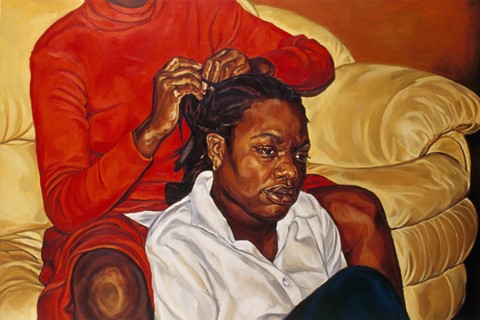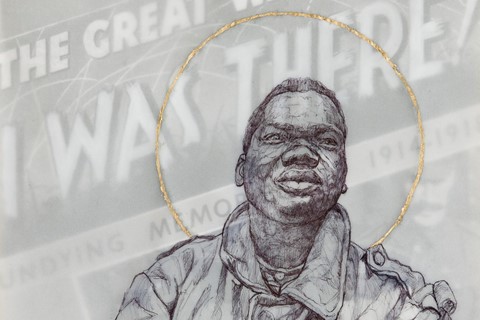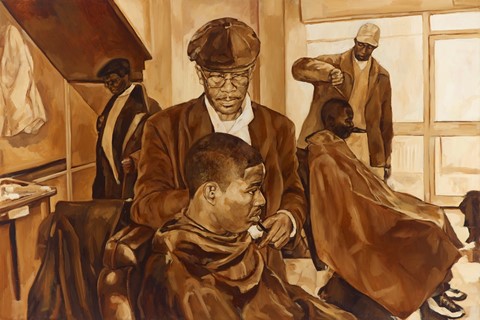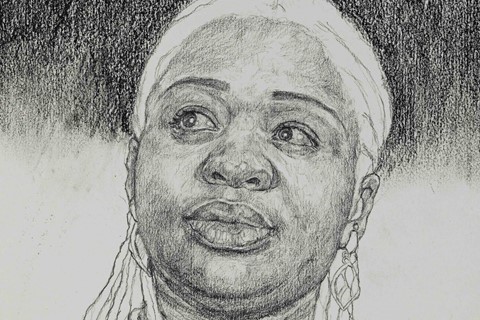Art historian, curator and writer Alayo Akinkugbe is behind the popular Instagram page A Black History of Art, which highlights overlooked Black artists, sitters, curators and thinkers, past and present. In her column for AnOthermag.com titled Black Gazes, Akinkugbe examines a spectrum of Black perspectives from across artistic disciplines and throughout art history, asking: how do Black artists see and respond to the world around them?
Barbara Walker is a Turner Prize-nominated multimedia artist, widely celebrated for her striking drawings that range from monumental wall-based works to intimate smaller-scale pieces. Her recent exhibition, Being Here at The Whitworth in Manchester, presents the breadth of her practice beyond drawing, beginning with her evocative paintings from the 1990s and culminating in her latest exploration of immersive wallpaper installations.
A common subject across Walker’s work is visibility and erasure. In her Vanishing Point series, she spotlights Black figures relegated to the margins, corners, and backgrounds of well-known paintings, while her Turner Prize commission, Burden of Proof, powerfully memorialises those affected by the Windrush Scandal on a monumental scale, with portraits drawn directly onto the walls of the gallery.
In the following conversation, Barbara Walker reflects on her ongoing passion for both painting and drawing, the personal impact of witnessing her son face repeated discrimination through stop-and-search encounters with the police, and the catharsis of creating art that addresses these injustices.
Alayo Akinkugbe: Your solo exhibition at the Whitworth is called Being Here. Where does this title come from?
Barbara Walker: My titles are very simple; they’re two or three words, straight to the point. I try not to make them pretentious and to keep them quite accessible. The idea of the title, Being Here extends from deep engagement with the themes of presence, identity and place. It’s an exploration of what it means to exist in a specific time and space, both physically and mentally. It’s also about me stamping my authority. It’s about me being here. I’m making a strong statement.
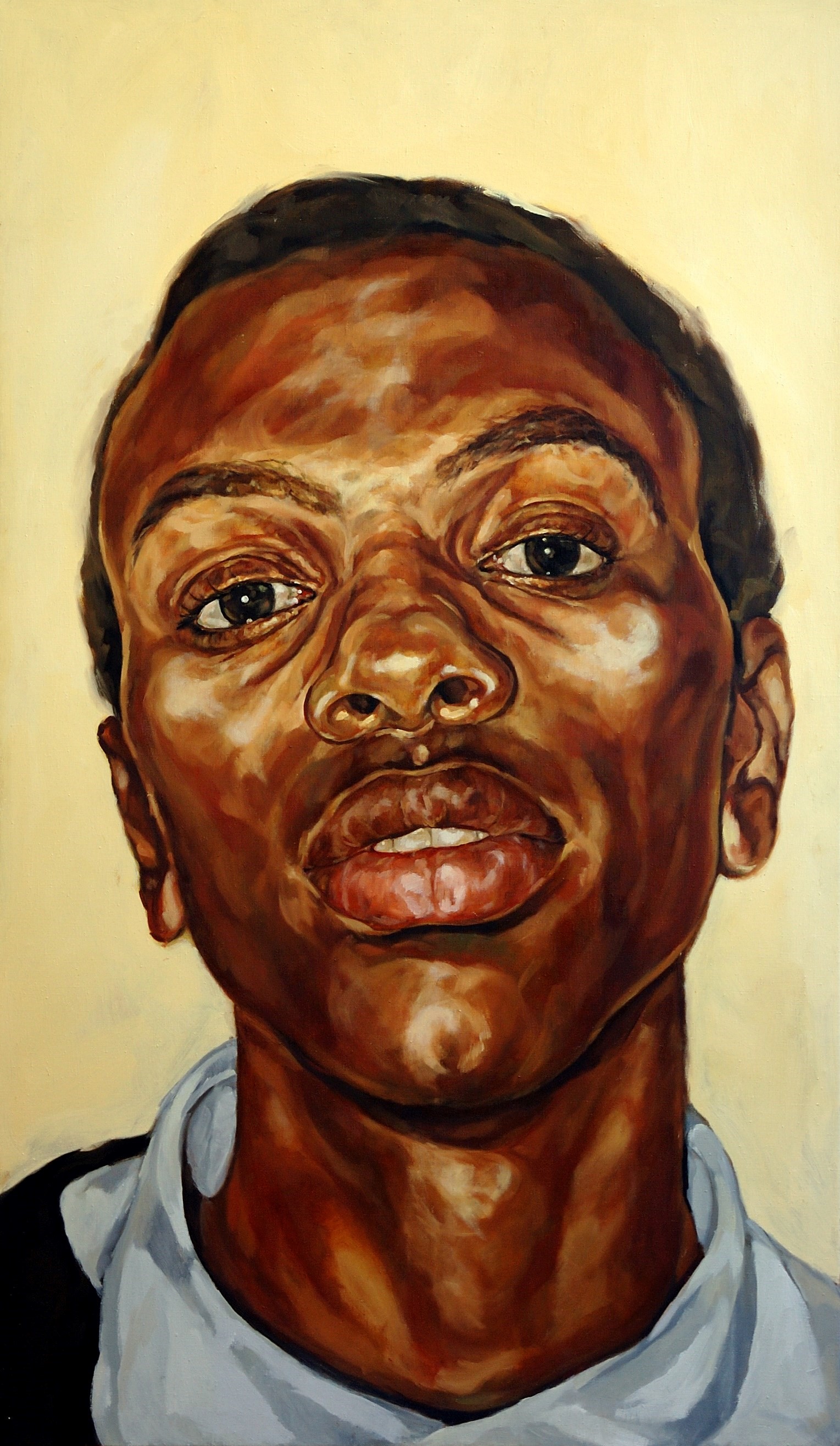
AA: Your early works from the 90s are paintings, though much of your work nowadays is drawing-based. What drew you to painting initially?
BW: I still think of painting even though I’m working in a different space. In the 90s, painting offered me a way to engage deeply with colour, texture and form, and allowed for expansive exploration of ideas around the Black body. It was immediacy and the physicality of paint that initially drew me to the medium, that smokiness and softness of paint, the way it allows for direct expression through layers, gestures and materiality. The later shift to drawing reflects my desire for more intimacy or precision in expressing ideas. Drawing is a more intimate, spontaneous process.
AA: Louder Than Words was a series made in response to excessive stop and searches, of which your son fell victim to repeatedly. Did you want to bring attention to this injustice with this series?
BW: Louder Than Words was born out of a personal, cathartic response to this repeated act of the stop and search that my son experienced. Imagine the emotional weight of these experiences, as a parent, witnessing such injustice. I needed an outlet and a place to cry out, and art became that medium for expression. I couldn't articulate it.
While the work was deeply personal, I also hoped it would bring attention to the issue. The excessive stop and search reflected a systemic problem of racial profiling and social inequality. With the series, I wanted to confront these realities and spark a dialogue on the injustice that many continue to endure.
I think that series of work was the first time where I was trying to just deal with the trauma of it. It looks at the policing of that time, but it also looks at the young Black male in British society. It’s a semi-autobiography. I still remember it as if it was yesterday, even though my son is now 40. I still live in fear or concern for him, and my children in general.
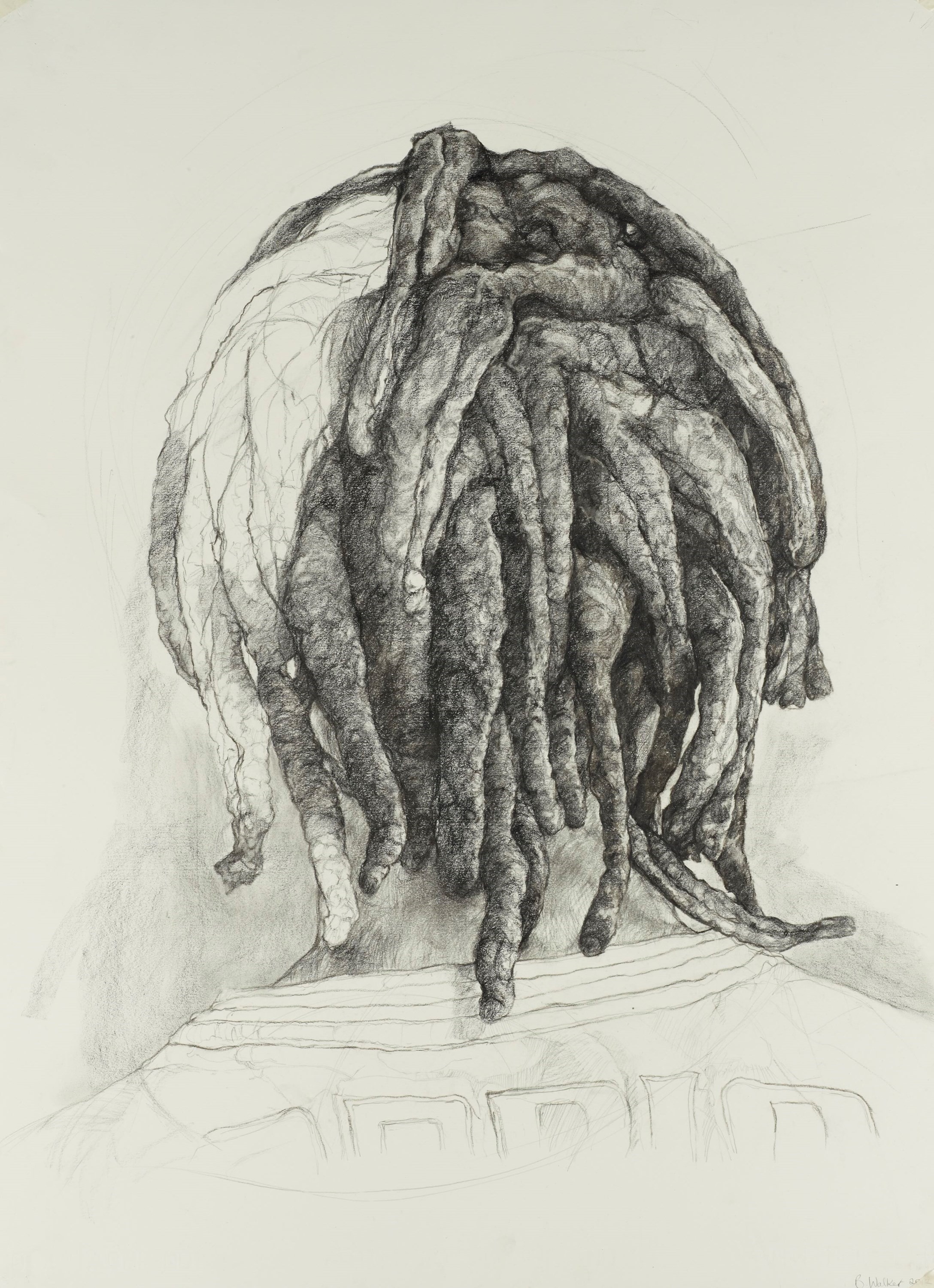
AA: Your use of erasure techniques – such as blind embossing – creates powerful visual commentaries. What prompted you to delve into historical archives and to rework historical European paintings to foreground the Black figures?
BW: This came accidentally. The National Gallery is one of my favourite galleries in the UK; I often visit, and I spend a lot of time fascinated by these spectacular works of art. As well as being beautiful, they can be quite problematic.
I look for conversations particularly with the front-of-house staff at the gallery and over the years I’ve been talking particularly to the Black front-of-house staff, asking the question, “What work speaks to you?” When you start to unpick these works, consciously or unconsciously, you start to look for yourself. It was through those conversations that my series, Vanishing Point began.
Through erasure techniques like blind embossing, I illuminate the absence and the visibility of Black individuals in art history. It’s a critical point. I guess I’m allowing their presence to be acknowledged and celebrated.
Being Here by Barbara Walker will travel to The Arnolfini in Bristol from 8 March – 25 May 2025.
